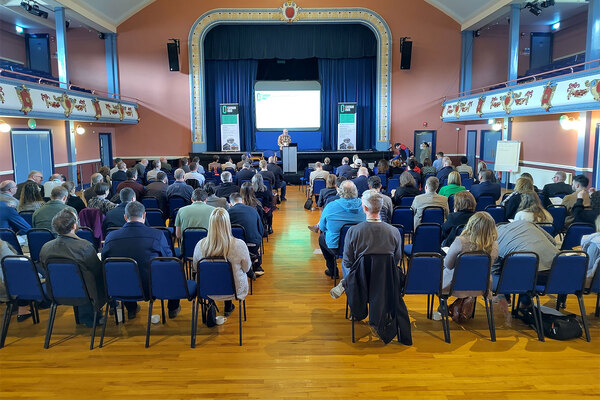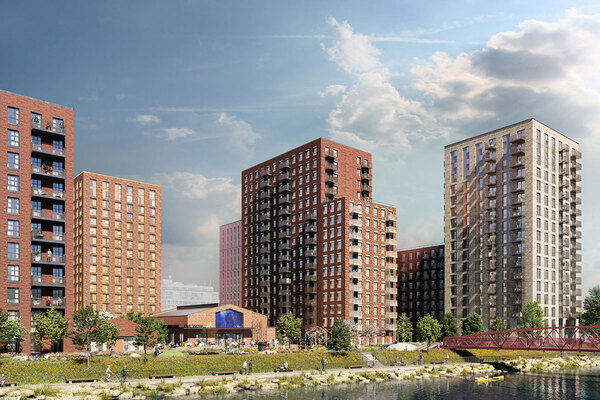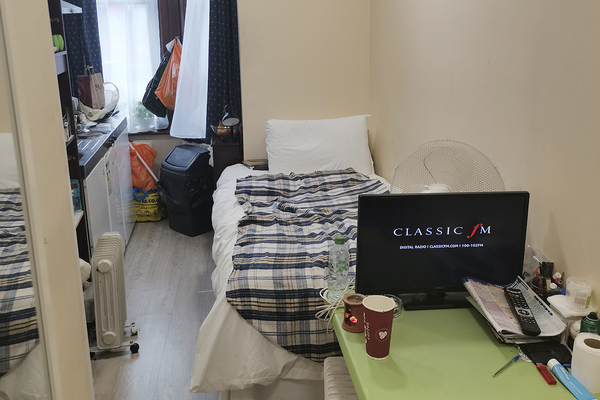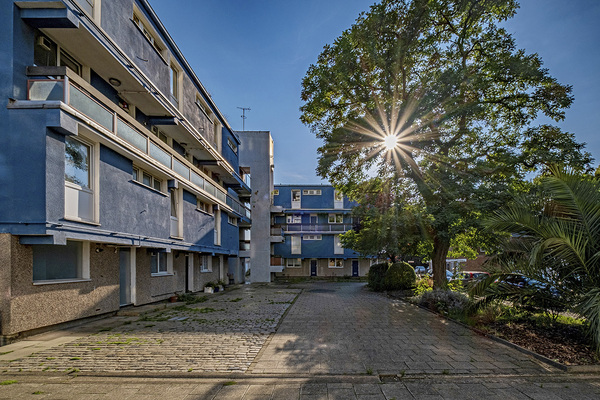You are viewing 1 of your 1 free articles
Blackstone Q&A: partnerships are key to attracting more institutional capital into the sector
In an exclusive Q&A, Gemma Kataky, managing director of real estate at Blackstone, tells James Riding why the private sector is investing in affordable housing and why partnerships with housing associations are critical
American private equity titan Blackstone is one of the world’s largest property investors. It entered the UK affordable housing market in 2017 when it launched Sage Homes, a for-profit provider of affordable homes.
In 2021, Blackstone and Regis launched build-to-rent firm Leaf Living.
Sage Homes buys Section 106 properties from house builders as either affordable rent or shared ownership, then manages them, providing builders with more capital for development.
Gemma Kataky, managing director of real estate, joined Blackstone in 2015 and has been involved in both Sage Homes and Leaf Living from their inception.
As a global investor, what are the attractions of the UK affordable housing market to Blackstone? What does affordable housing mean to you?
We believe private capital is a valuable part of the solution to the chronic undersupply of affordable housing, which is an issue not only in the UK but in many major economies around the world. This is why, together with Regis, we founded Sage Homes in 2017 to create a long-term affordable housing provider in the UK.
To us, affordable housing means creating homes for the people who need them most. Having committed to funding the development of 23,000 affordable homes to date, we are proud to have established and backed a platform which has been recognised as the largest provider of new build affordable homes in England for three years running.
What are the biggest challenges on the horizon for the UK affordable housing market? Is the system working as it should?
The combination of structural undersupply of housing generally and the growing demand in particular for affordable rental housing have resulted in a widening imbalance in the overall supply of such housing. There are many reasons contributing to this imbalance, including sometimes restrictive planning policies, increasing construction costs as a result of elevated inflation and disrupted supply chains, as well as the rising cost of capital in the past several years due to higher interest rates.
While there is no panacea to solving the problem of housing overnight, through public and private co-operation, we believe the capital that is needed to build more affordable homes can be found.
What was your initial strategy when entering the UK affordable housing market? How has that strategy changed in the years since?
Our strategy has remained consistent since we co-founded Sage Homes: to partner with local authorities, developers and house builders to provide modern, high-quality and energy-efficient homes via affordable rent and shared ownership products to those that need them the most.
It is this focus, as well as our ability to invest capital on a long-term basis, that has meant that in the past seven years, Sage Homes has become [one of] England’s largest providers of newly built affordable homes.
[Sage Homes did deliver the most new build affordable homes out of any registered provider in 2021-22.]
As our residents are at the heart of what we do and resident experience is of the upmost importance, we have evolved our strategy to ensure they are supported in every way we can, whether that be through Sage’s dedicated customer care team, the recent creation of the Heart of Sage fund, or through the financial well-being team. Customer satisfaction is crucial and this will always be a core part of our focus.
What have Sage Homes and Leaf Living delivered so far in terms of new homes?
Since Blackstone and Regis launched Sage Homes and Leaf Living in 2017 and 2021 respectively, they have delivered nearly 16,000 homes, and Sage is currently on track to deliver a total of 30,000 new affordable homes by 2030.
This has been achieved through a mix of public-private partnerships, such as our development agreement with Vistry announced in November last year, as well as working with Homes England and the Greater London Authority (GLA) to further increase the number of new affordable homes being built.
We believe the sector will continue to benefit from a mix of partnerships, ultimately increasing vital investment into the sector.
What is the pipeline for Sage Homes and Leaf Living looking like? Is it bigger or smaller than your hopes a year ago?
Like all prudent organisations, Sage and Leaf keep a close eye on the economic climate to anticipate and adapt to any relevant impacts on the market and sector. Both companies have strong pipelines and are confident and on track to deliver on their targets.
Last year, Sage and Leaf announced a significant partnership with Vistry Group, for example, which will deliver more than 2,900 homes across key markets where the demand for high-quality housing has outpaced supply.
There has been some criticism in the press of investors “pricing British families out of the market” by buying up new builds and raising rents. What do you make of this? How does the market (and consumers) benefit from more well-organised players?
We are a leader in responsible investing in housing and we couldn’t be prouder of our record and our long-term capital commitment to add to the supply of high quality, professionally managed rental housing.
We believe this is beneficial to the sector, as over time it will contribute to attracting more institutional capital. In the case of affordable housing at Sage, we rent to those on local authority housing registers which have been identified as being in housing need.
The UK government sets and regulates all of Sage Homes’ rents at significant discounts to open-market levels. It is Sage’s operating model that allows it to bring additional stable capital and capacity to the UK housing market ultimately benefiting all of those most in need.
The solution to the housing crisis, we firmly believe, is to build more housing. In the UK, new home completions are 49% below estimated annual housing needs and 40% below 1970 levels, when the UK population has grown by 12 million people since then.
Will there be more opportunities for for-profit providers and housing associations to work together in the current development and financial landscape?
Absolutely. Partnerships are critical as we believe that by working together, we can bring the required investment into the sector to help address the housing crisis currently faced in the UK.
Since its inception, Sage has delivered in partnership with Homes England, more than 220 councils, the GLA, as well as countless other housing associations and developers.
The need for private sector investment is increasing, and we believe that affordable or private rental housing providers, such as Sage Homes and Leaf Living, are positive examples of how private sector capital can help to meaningfully increase the supply of homes across the country.
Recent longform articles by James Riding
The Inside Housing interview with Michael Gove: cross-party realisation we need more social rent
Housing secretary Michael Gove sits down with James Riding, in an exclusive interview covering how to build more social rent, the role for landowners, and those letters to housing association chief executives
A timeline of housing history – the 1990s
As Inside Housing turns 40 years old, we are looking back over four decades of housing history, as reported by the publication. James Riding takes a walk down memory lane to the ’90s, in our second instalment
Five things we learned from the report on Housing First pilots
The outcomes of the Housing First scheme have been detailed in a report published by the Department of Levelling Up, Housing and Communities. James Riding goes through five key takeaways
Sign up for our development and finance newsletter
Already have an account? Click here to manage your newsletters











